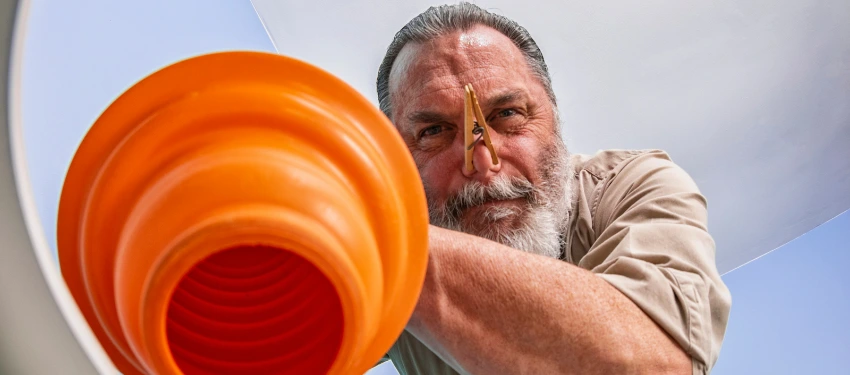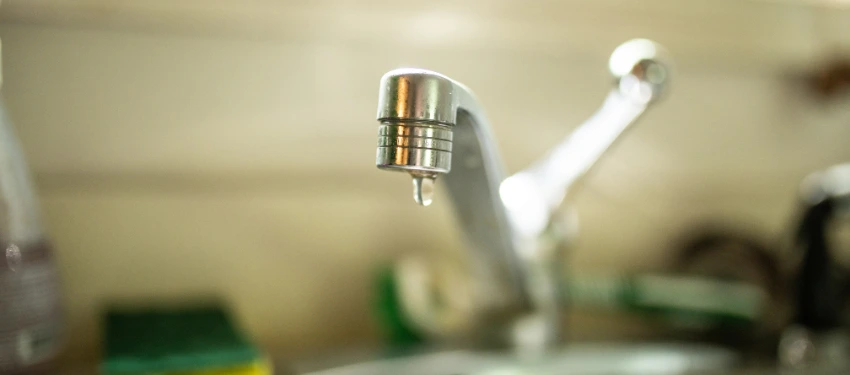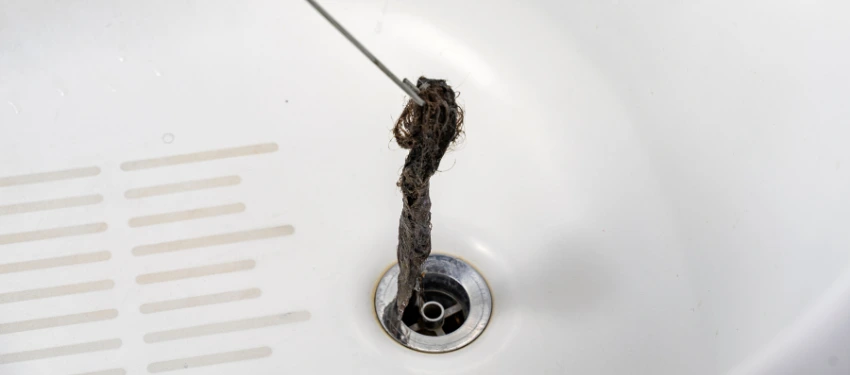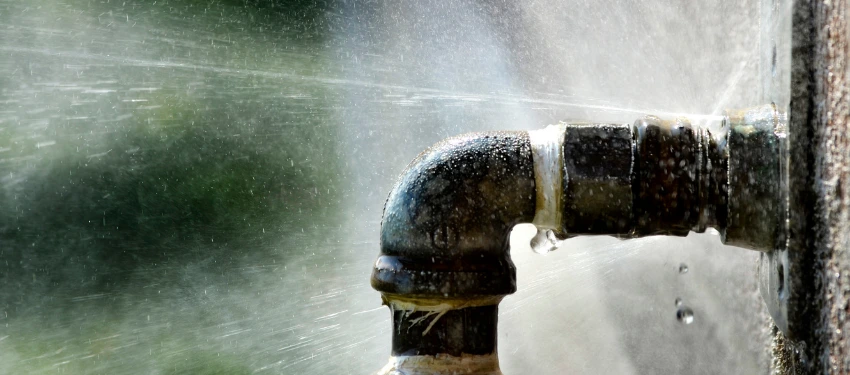Our plumbing is a very important system in our house. This invention is probably one of the best discoveries for mankind’s comfort. We probably don’t realize it, but plumbing isn’t only about “pipes” but covers a whole range of things like heating, water supply, and sanitation. The wonders of plumbing make our lives easier but plumbing issues also come with the territory.
Plumbing issues could hinder all your day-to-day tasks. Imagine if you suddenly had issues flushing your toilet? How about in the middle of taking a shower, the water pressure suddenly goes down, or how about the excess measure of a faulty leaky pipe causing dangerous fungus and molds to grow in your home? To top it all, how about receiving your utility bill laden with a hefty bill? These are all common issues related to plumbing. Other popular issues that you will most likely encounter are running toilets, dripping faucets, slow draining or clogged drains, problems with the water heater, and bursting pipes.
From a simple “drip, drip, drip” sound that you hear, a bursting pipe followed due to inattention from homeowners. What follows next will be the carpets, walls, and flooring being damaged, which means a more extensive issue and bank-breaking expenses. Sooner or later, you will encounter one of these issues as a homeowner, so you should be knowledgeable in dealing with them. Some are easy and inexpensive fixes, while some issues should be best handled by a professional plumber.
Here are the common plumbing issues that most homeowners encounter:
Clogged Toilet

This is very easy to spot – if your toilet bowl fills up but won’t drain away, then you have a clogged toilet. This is one of the most stressful plumbing issues especially as they overflow and the wastes are spilled all over your flooring (not to mention its bad smell).
The main reason for this issue is that toilets are made for going number 1 and number 2 and the toilet paper. So, if non-dissolvable items enter the toilets, then they will not move through the pipes, making it hard for water to flow past them.
The first fix in our book is the old but trusty plunger. You can also explore some chemical drain cleaners but it is not guaranteed to work. If your vigorous plunges don’t work or the chemical drain cleaners, then it is time to call in the plumber. This is the best move especially if the water backups in more than one bathroom in your home since this might involve the sewer line or the septic tank. You would most likely not have the right tools the clear clogs and it is a big issue to be handled by an inexperienced homeowner.
Running Toilet
Not only is this an annoying problem, but wasteful and costly too. How to spot a running toilet? This is when the toilet works as intended but continues to run even after usage.
Did you know you are losing 20-30 gallons per day when you have a running toilet? The first step will be to check your flapper valve, if not faulty, then call your trusted plumber to fix the issue ASAP, as this will definitely propel your water bill.
The most common reason for this issue is when the inner working of your toilet is not working properly –loose fill tube, imbalanced float, worn-out valves, improperly sized flapper chains, and corroded toilet handles. An uncommon possible reason is when the sediments affect the flushing and filling of your toilet.
Dripping faucets
 You can say that this is the counterpart of a running toilet. An estimate of 5.7 gallons of water is wasted per day if your faucet drips once per second.
You can say that this is the counterpart of a running toilet. An estimate of 5.7 gallons of water is wasted per day if your faucet drips once per second.There are a number of possible reasons for your leaky faucets, from excessive water pressure, damaged pipe joint, cracked pipes, incorrect pipe laying, pipe corrosion down to loosened parts.
Sometimes, a quick replacement of worn-out washers is all that it takes to fix the issue or simply tightening on some loose parts.
If you want to try tightening loose parts, here are the steps to do it:
- Know the type of faucet that you have. Some of the most common types are ceramic disk, cartridge, and ball faucet.
- Turn off the water supply.
- Make sure to plug the drain – you can either use a sink plug or a rag, to ensure that no parts will slip in the hole while you are working.
- Unscrew the handle and check for any loose parts. You can also use a wrench to check the packing nut and stem under the handle.
- If you are not able to identify which parts are loose, do not make any further steps and call your trusted plumber to solve the issue for you.
Low water pressure
This issue is oftentimes indicative of a much bigger issue like pipe corrosion, blocked sewer lines, and unidentified water leaks. Another common cause is sediment and calcium build-up in the aerator.
For mineral deposit buildup, you can soak your showerhead and aerator with vinegar and clean off any dirt.
Again, if the issue is not fixed with the vinegar solution, call in your plumber to assess the issue. And if in case of a sudden drop in the water pressure, don’t attempt some DIY fix and call your plumber immediately.
Pro tip: If you want to avoid a low water pressure due to sediment build-up, install a filtration system.
Slow or clogged drains
 This issue is one of the most usual complaints that we receive here in Same Day Pros. Similar to clogged toilets, physical objects or non-dissolvable materials cause the clog. It could be soap, food waste, grease, cat litter, small objects, hair, and more.
This issue is one of the most usual complaints that we receive here in Same Day Pros. Similar to clogged toilets, physical objects or non-dissolvable materials cause the clog. It could be soap, food waste, grease, cat litter, small objects, hair, and more.You can try to use a plunger and a plumber’s snake or the classic vinegar and baking soda solution to try and dissolve the clog.
If there are multiple drains with a similar problem, then it is a red flag for possible sewer line problems. Call your plumber immediately as a DIY solution like chemical drain cleaners won’t work.
Pro tip # 1: Try to use a drain guard, this is cheap, readily available, and proven effective to catch those hair that could clog your drains.
Pro tip # 2: Be careful of what does down your drain. Don’t forget that FOG (fats, oils, and greases), coffee grounds, and food scraps should not go down your drain.
Faulty Water Heater
With the cold season that we are in, it will be a total bummer if your water heater suddenly stops working. And you will surely feel it instantly as you open the shower and cold water comes out. Other indicators of faulty water heater are noises from the heating unit, dripping water, and discolored water.
There are many possible reasons for this issue like mineral deposit build-up, pilot light going out, a faulty thermostat, and poor maintenance.
Whatever the cause may be, this is one plumbing issue that should be fixed by professionals.
Leaky and bursting pipes
 This issue requires an immediate fix; however, you might not even know that there is a problem unless an inspection is made. Some of the tell-tale signs of a leaky pipe are:
This issue requires an immediate fix; however, you might not even know that there is a problem unless an inspection is made. Some of the tell-tale signs of a leaky pipe are:- Visible mold and mildew
- Musty smell
- Skyrocketing water bills
- Stained walls, ceiling, and floors
- Sagging ceiling
- Running meter even you have already shut off the water in the house
- Foundation cracks
- Wet spots
Several reasons could trigger a leaky pipe, such as cracked pipes, corrosion, clogging, and excessive water pressure.
Regardless of the issue, call your plumber immediately. The very foundation of your home is at stake here and not just high-water bills and repairs.
During the winter season, this could also snowball into a much bigger problem, as the water could freeze and cause the pipes to burst.
Pro tip: To prevent pipes from bursting, make sure that your pipes are well-insulated.
Why should you hire a professional plumber?

- Experience and Expertise – plumbers have undergone comprehensive training to obtain their licenses. Homeowners won’t be able to diagnose problems especially if they are complex. And sometimes, simple problems would still be hard to spot if you don’t have the right experience.
- Thorough inspection – we recommend a bi-annual plumbing inspection from a professional plumber. They will be able to spot possible issues and provide proper repairs and replacements to avoid issues from being bigger. Multiple issues will be fixed from a plumbing inspection and save you from a future problem.
- Right equipment – along with the skills, plumbers also have the right tools and equipment to solve your issue.
- Peace of mind – a plumbing issue could be stressful and would usually require to be solved immediately. Scouting the net for a DIY solution is not efficient and would not guarantee that you will be able to resolve the problem.
Tip: When hiring, make sure to ask your plumber for a license and if they have liability insurance. You can also ask for estimates and ensure that there are no additional or surprise charges.
As a homeowner, you will surely run on one of these plumbing issues. As soon as you spot any problems with your plumbing, no matter how small, make sure that you repair them right away. There are some easy fixes that you can do, but before attempting to do some DIY repairs, make sure that you fully understand what the issue is.
A simple problem could take a turn for a worse if done without the proper knowledge, tools, and skills. This is why it is best to always call a professional plumber to solve your plumbing dillema.


 You can say that this is the counterpart of a running toilet. An estimate of 5.7 gallons of water is wasted per day if your faucet drips once per second.
You can say that this is the counterpart of a running toilet. An estimate of 5.7 gallons of water is wasted per day if your faucet drips once per second. This issue is one of the most usual complaints that we receive here in Same Day Pros. Similar to clogged toilets, physical objects or non-dissolvable materials cause the clog. It could be soap, food waste, grease, cat litter, small objects, hair, and more.
This issue is one of the most usual complaints that we receive here in Same Day Pros. Similar to clogged toilets, physical objects or non-dissolvable materials cause the clog. It could be soap, food waste, grease, cat litter, small objects, hair, and more. This issue requires an immediate fix; however, you might not even know that there is a problem unless an inspection is made. Some of the tell-tale signs of a leaky pipe are:
This issue requires an immediate fix; however, you might not even know that there is a problem unless an inspection is made. Some of the tell-tale signs of a leaky pipe are:
